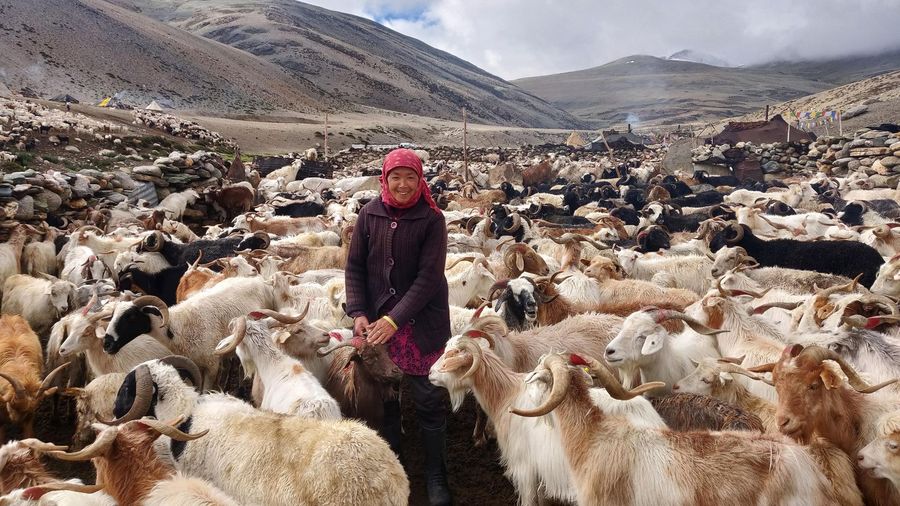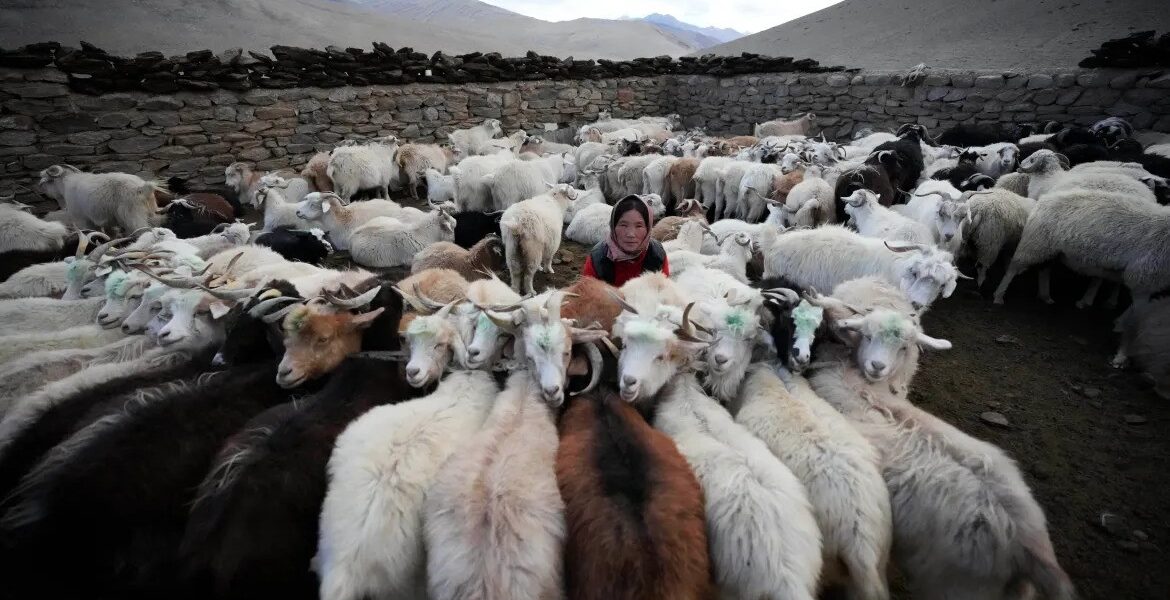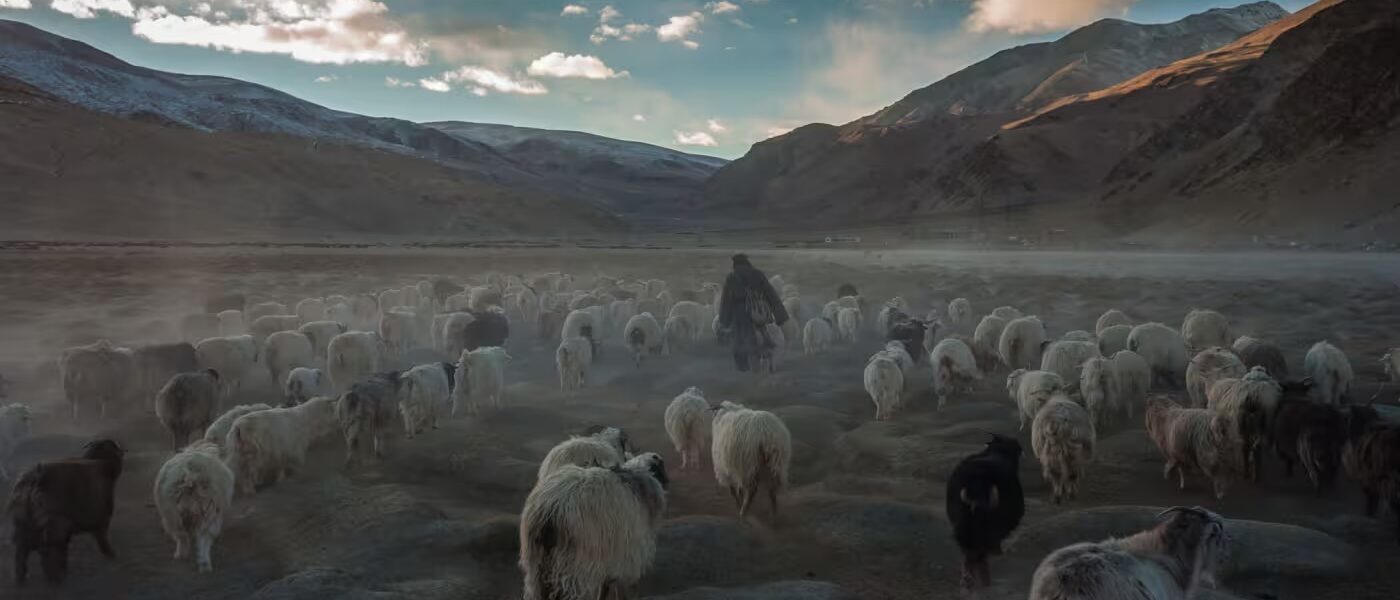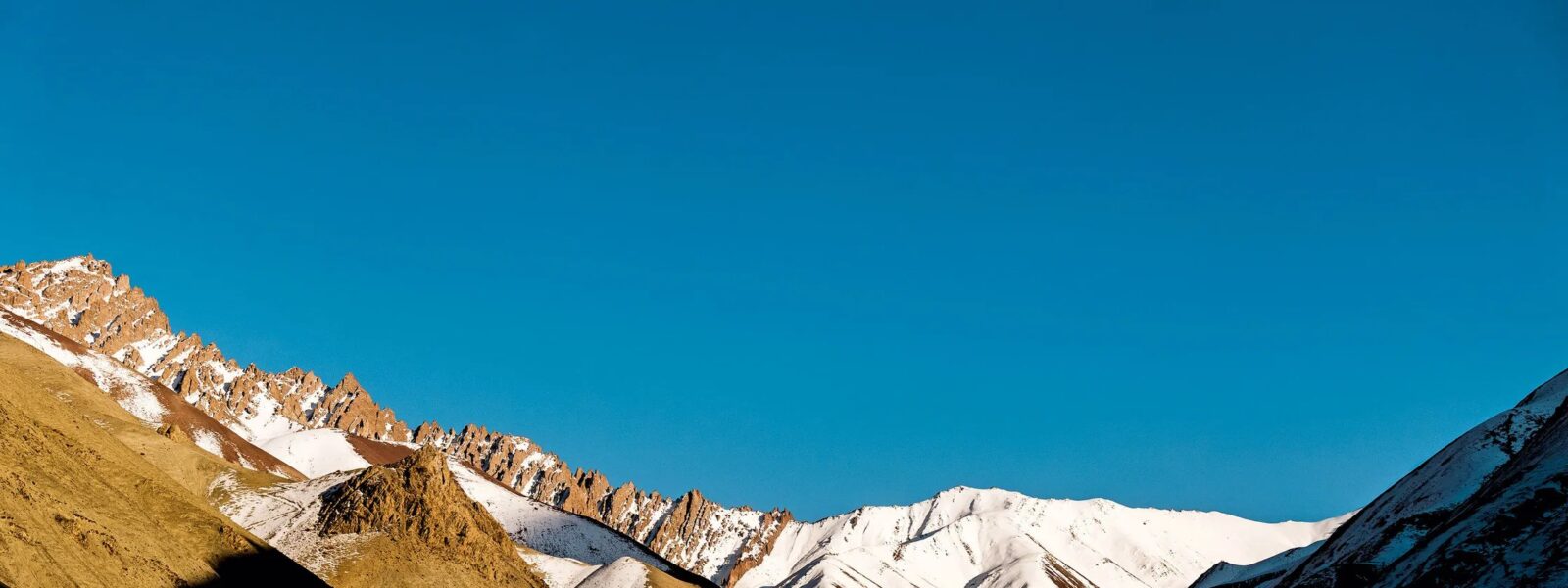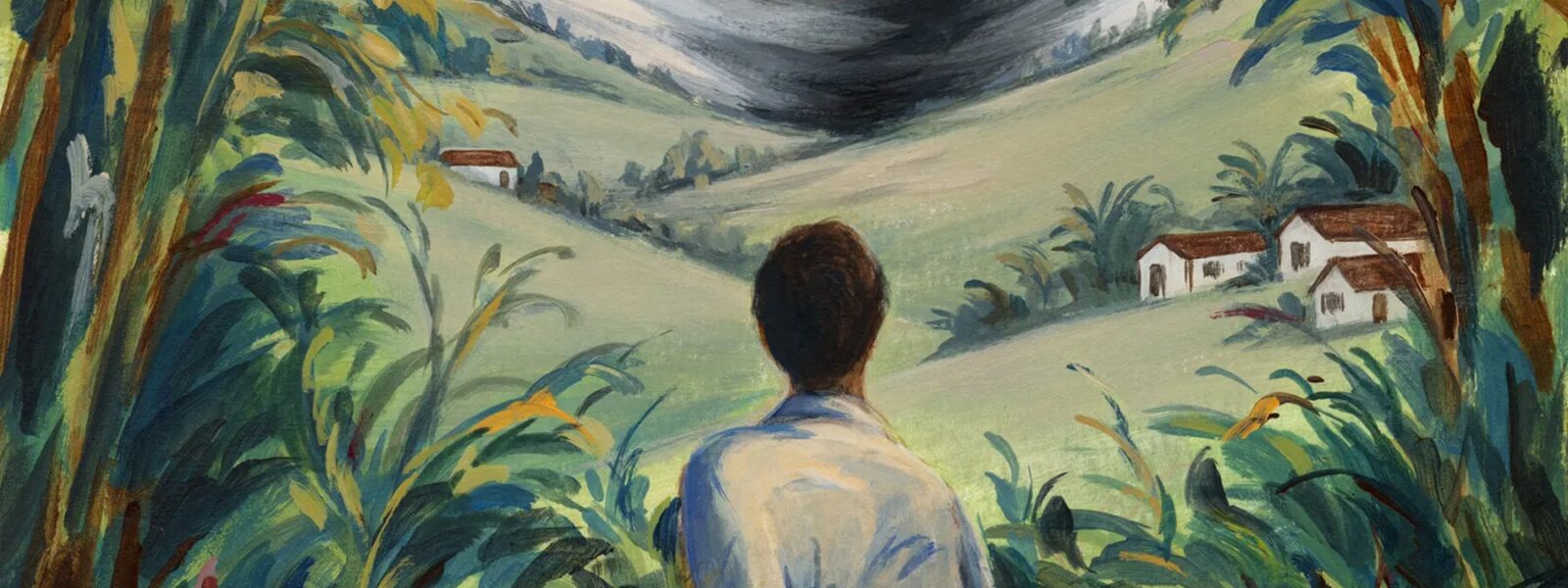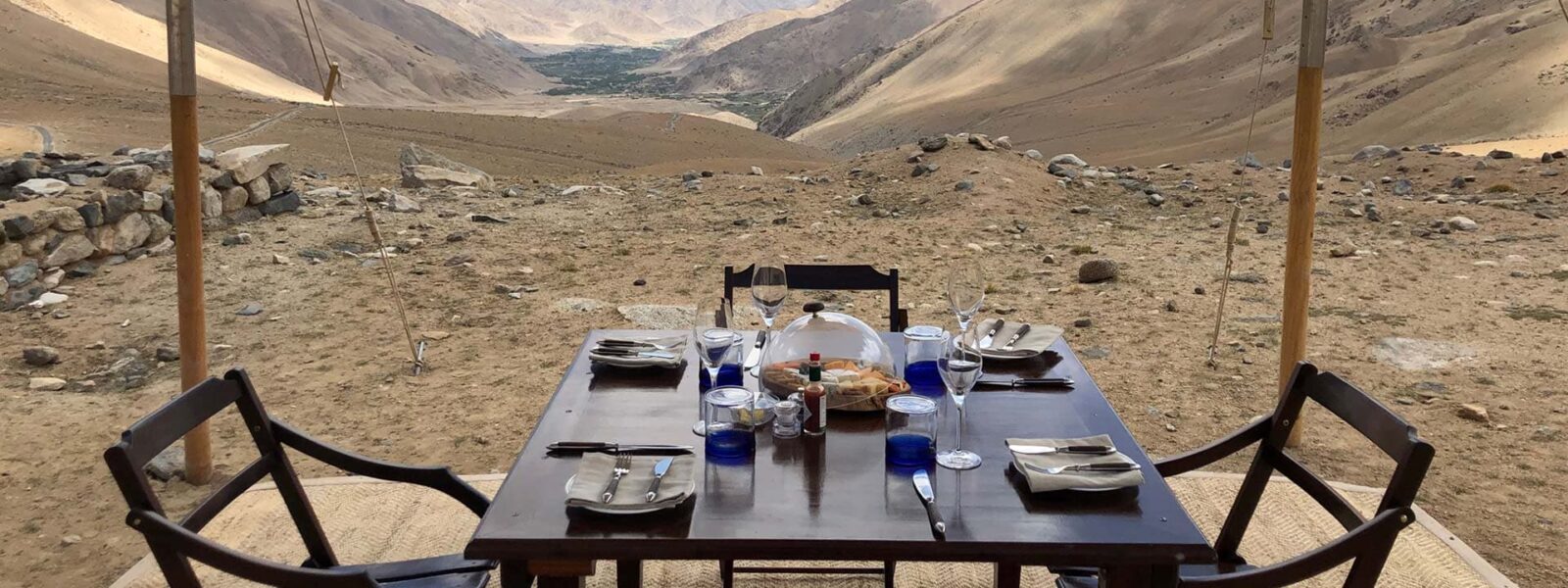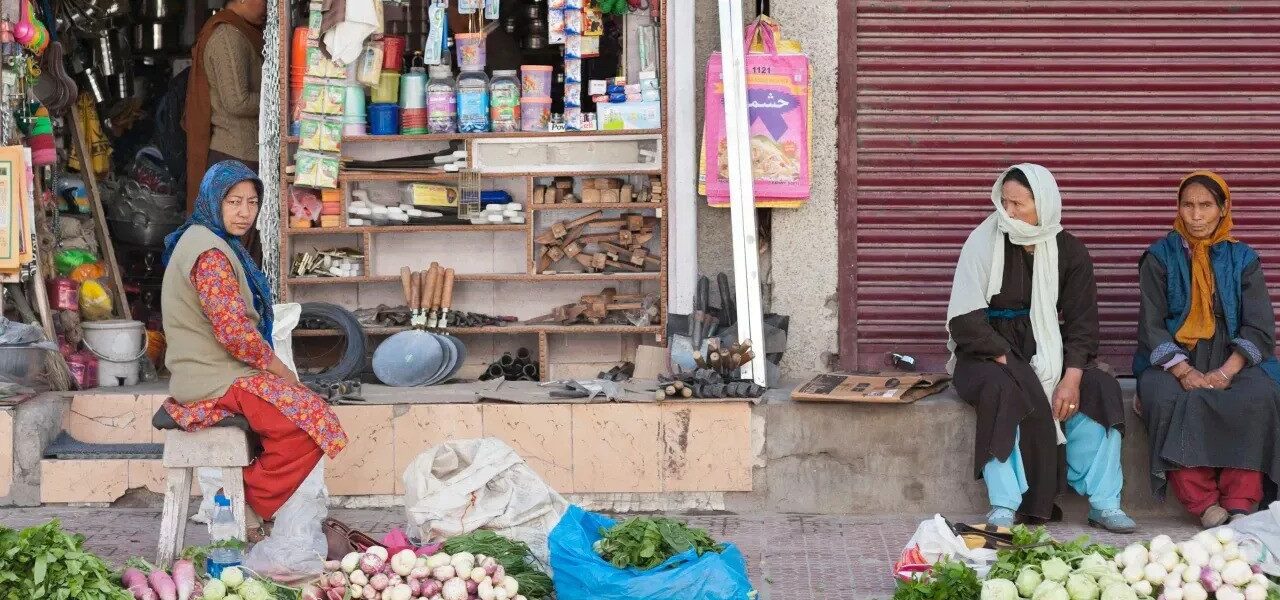Prologue: Whispers on the Wind of Changthang
There are places on this planet where the silence feels alive — not empty, but sacred. One such place lives in the high-altitude folds of northern India, where the vast, cold desert of Ladakh stretches like a forgotten page of history. And within this expanse, where even the clouds seem hesitant to disturb the stillness, you’ll find the Changthang Plateau. It is here that the Changpa herders continue a way of life that has endured for centuries, untouched by time and untouched by noise.
As I stepped off the rumbling 4×4 and felt the wind tug gently at my scarf, a soundless greeting passed between me and the landscape. No honking horns. No chatter. Just the crunch of gravel beneath my boots and the distant bleat of a goat carried on the breeze. It was the sound of a culture still in motion, migrating across the plains with the seasons, guided by starlight and instinct.
The Changpa nomads are pastoralists — people who follow their herds through one of the most formidable environments on Earth. And yet, this land, so unforgiving to outsiders, has long been their sanctuary. Their home. Their identity. From their sturdy rebo tents woven of yak wool, to the sacred rhythms of grazing, milking, spinning, and trading, the Changpa’s daily existence is woven seamlessly into the fabric of this rugged terrain.
I came in search of understanding. What does it mean to live in harmony with the land? How do these nomads endure sub-zero winters, year after year, with nothing but livestock and tradition to guide them? And what can we — travelers, dreamers, Europeans with tightly packed schedules — learn from a people who measure time not by clocks, but by the shifting snow lines and the wool-shedding of goats?
The journey ahead would take me deeper into their world: inside smoke-filled tents warmed by dung fires, across trails etched only in memory, and through conversations that spanned more than language. But on this first day, as the wind swept across the Changthang Plateau and whispered through my jacket, I knew this was no ordinary travel experience.
This was a pilgrimage into a living heritage — one that pulses quietly beneath the surface of modern India, waiting for those willing to listen.
In the weeks to come, I would follow the hoofprints of pashmina goats, sip salty butter tea with women whose laughter could warm the coldest dawn, and witness the challenges facing a people standing between tradition and change. But here, on this wind-blown plain, I simply stood still and listened.
Because sometimes, the most powerful stories don’t begin with noise. They begin with a whisper.
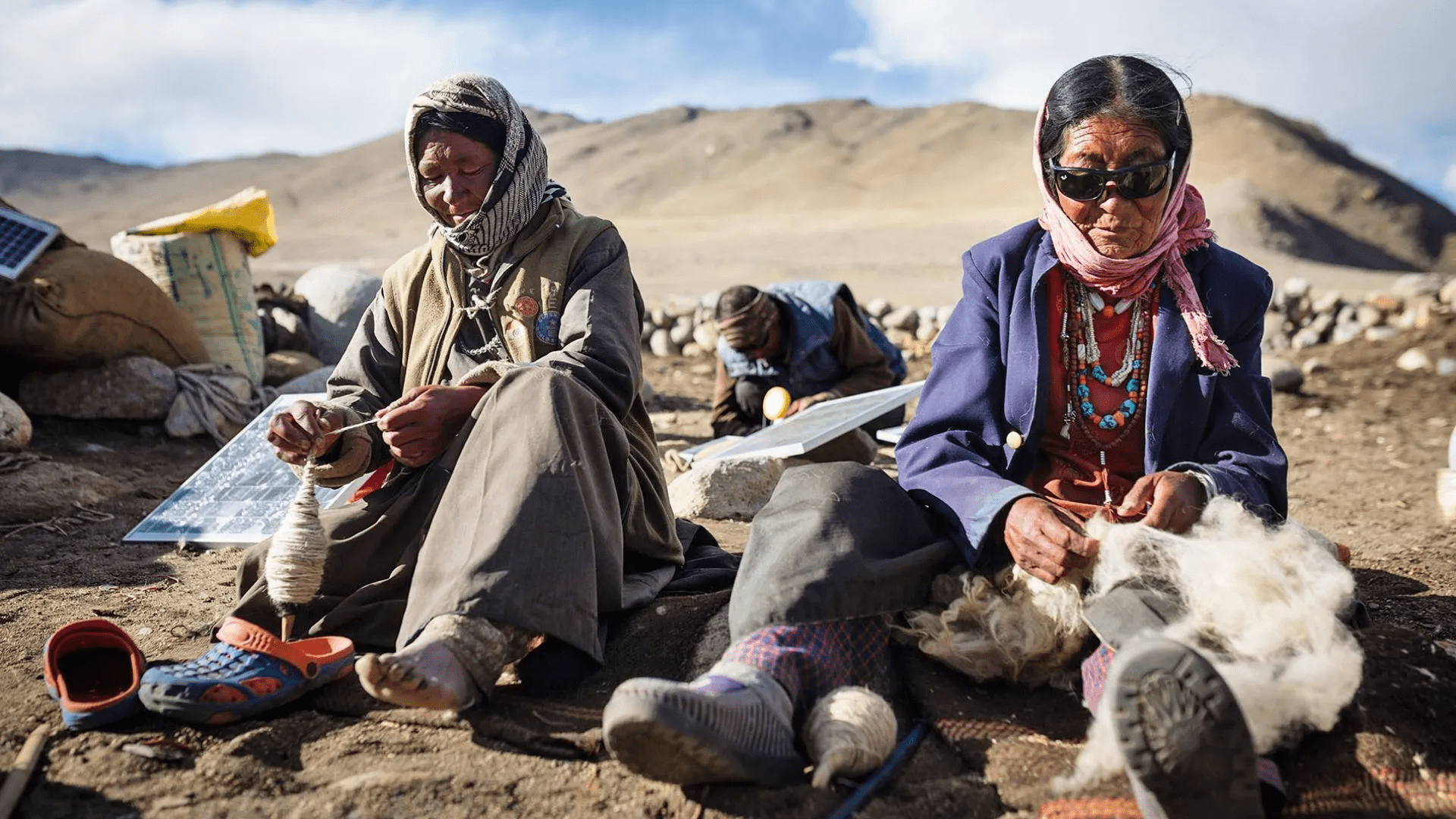
Following the Hoofprints: Life with the Changpa Herders
It was just after sunrise when I met them—bundled in layers of wool, their faces weathered by high-altitude winds and sunlight so sharp it carved shadows into the rock. The Changpa herders were already at work, tending to their pashmina goats with quiet familiarity. There were no shouts, no herding dogs barking. Only the low, rhythmic hum of morning activity echoing across the wide plateau.
A young man named Tsering greeted me with a nod, gesturing toward his family’s rebo tent. I followed him across frozen earth, stepping carefully around a curious goat that eyed me like an alien from another planet. Inside the tent, warmth and scent hit me at once—yak dung smoke, butter tea, wool, and people. This was no tourist façade. This was the heart of nomadic life in Ladakh.
Tsering’s mother sat weaving wool by hand, her fingers dancing over threads in a way that suggested she could do this with her eyes closed. A pot boiled gently near the fire, sending curls of steam upward like offerings. In this sacred space, I noticed something else—quiet confidence. These were people who knew their land in ways maps could never explain.
The day unfolded with purpose. Children led young goats to graze, men fortified the stone pens, and women prepared meals that would fuel hours of work in the biting cold. Each task, though simple, carried the weight of survival. There were no breaks, no weekends, no Wi-Fi. Only the rhythms of nature and a way of life honed over generations.
As I joined the herders in their daily routine, I began to understand that this lifestyle wasn’t about hardship—it was about balance. About living within the boundaries of the land, never taking more than what could be replenished. The seasonal migration patterns they followed weren’t imposed, but inherited—routes walked by ancestors, memorized through stories, and guided by instinct.
The more time I spent among them, the more I saw the nuance: how they measured snow depth with their hands, judged herd health by the sheen of a coat, and sensed storms before they formed on the horizon. Theirs is not a primitive existence. It is an elegant, self-sustaining system, rooted in respect—for the animals, for the mountains, and for each other.
As a European, I had come seeking stories. But what I found was a mirror—one that reflected how far modern life has strayed from simplicity, and how precious that simplicity remains. In a world obsessed with speed, the Changpa taught me to walk slowly, to listen deeply, and to value the silence between words.
Life with the Changpa herders is not just about survival—it’s about presence. And in a tent warmed by smoke and kindness, I felt more at home than I had in years.
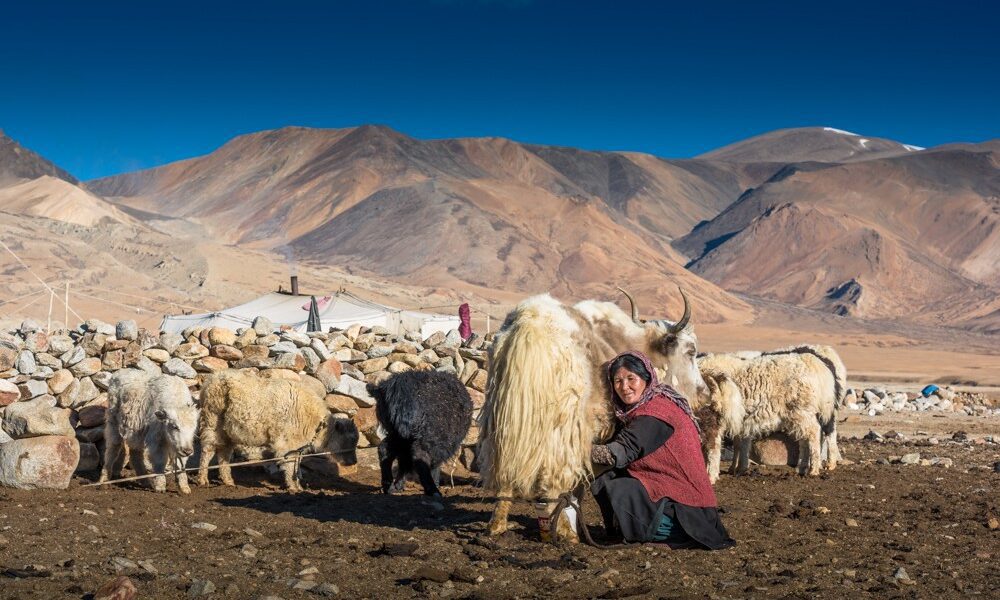
Tents of Wool, Hearts of Fire: Inside a Rebo Tent
From the outside, it looks like a mound of coarse fabric anchored by stones — a structure so modest it might go unnoticed by the untrained eye. But step through the flap of a Changpa rebo tent, and you enter a universe where every object tells a story, and every detail speaks of survival, warmth, and tradition.
The rebo tent is not merely a shelter. It is a living archive of nomadic knowledge, crafted entirely from the resources of the high-altitude terrain. Its frame is built from willow or juniper poles, while its thick walls are made of hand-woven yak wool, layered and blackened by decades of smoke and weather. It breathes, it insulates, and it moves — taken down and packed away each time the Changpa families migrate to fresher pastures.
Inside, I was greeted by an embrace of heat, despite the bitter cold outside. A small fire burned in the center, fed by yak dung cakes, which release slow, steady heat without the need for firewood — a smart and sustainable solution in these treeless lands. Around the fire, women sat weaving, chatting in Ladakhi, and stirring pots of milk and barley. A battered kettle hissed in the corner, steam curling into the shadows.
Everything had its place: brass pots gleamed on makeshift wooden shelves, sacks of flour were stacked near the door, and sleeping mats were rolled into tidy bundles. Overhead, bundles of dried herbs and ropes of cheese hung from cords strung across the ceiling. The air was smoky, earthy, and strangely comforting. I found myself breathing deeper, slower, anchored by the quiet dignity of it all.
The center of this world is not technology or luxury, but the hearth — a symbol of survival and soul. Around this modest fire, stories are passed on, elders are honored, and children learn the values that will guide them through snowstorms and droughts alike. It is here that guests are welcomed, where warm butter tea is served with a smile and no expectation, and where strangers like me are folded into the rhythm of the family with silent grace.
The fabric of the tent is more than yak wool. It holds generations of memory — of joy, grief, marriage, death, and movement. In the night, as winds howled across the Changthang Plateau, the rebo tent did not tremble. It stood strong, like the people who built it. And as I lay wrapped in wool blankets, listening to the soft breathing of goats just outside the wall, I understood something elemental.
In a world that builds ever taller, the Changpa live close — close to the earth, close to one another, close to the essence of what it means to belong. And inside this tent of wool, beneath stars unspoiled by electricity, I felt something stir. Not wanderlust, but wonder. Not escape, but return.
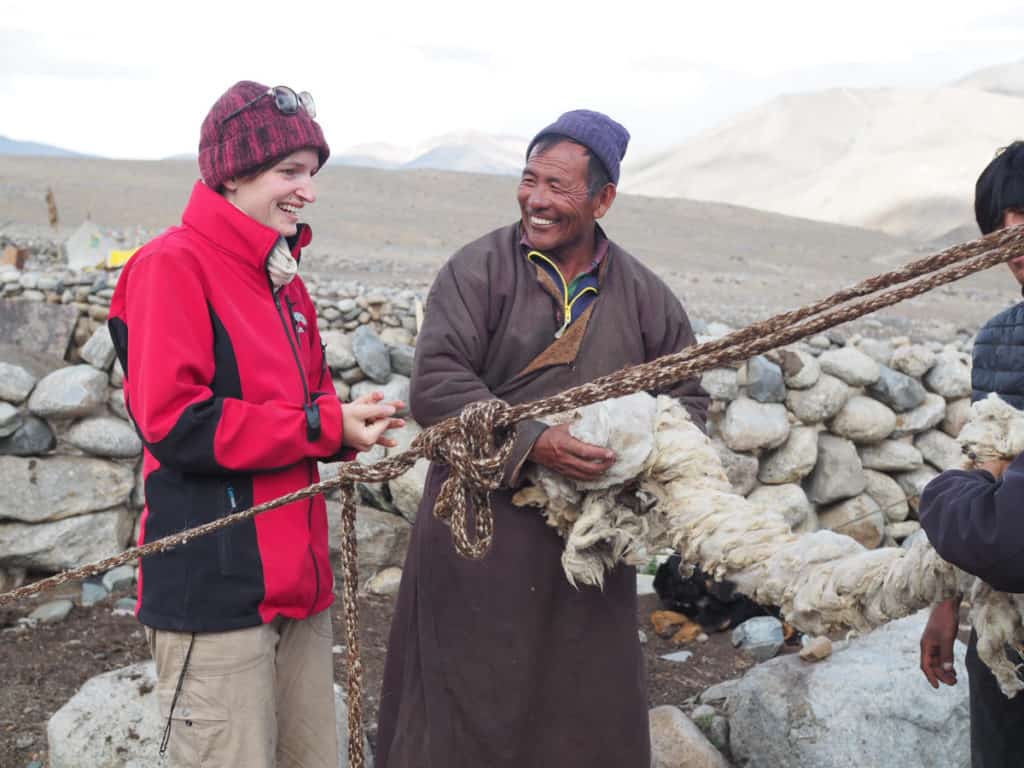
Threads of Gold: Pashmina Goats and the Soul of the Changpa Economy
It is easy to fall in love with pashmina — soft as breath, warm as memory, and light enough to fold into a shirt pocket. Across the boutiques of Paris, Milan, and Vienna, this luxurious wool adorns winter collections and runway shows. But few pause to ask where it comes from. Fewer still follow the trail high into the Himalayas, to the Changthang Plateau, where the Changpa herders live among the creatures who grow this gold in silence — the changra goats.
These shaggy, sure-footed animals are not domesticated for meat or milk. Their true gift lies in the soft undercoat they develop to withstand the brutal Himalayan winter — a fiber so fine it can only be harvested by hand, in the spring, once the cold has passed. This is the origin of pashmina wool, the heart of an ancient economy that still pulses through Ladakh’s wind-chapped valleys.
I watched as Tsering and his father gently combed the goats, one by one, murmuring to them like old friends. Each stroke of the wooden comb pulled away soft, downy tufts, revealing the treasure beneath the coarse outer hair. There were no machines, no efficiency quotas — only patience, care, and tradition. This wool, gathered in sacks, would be carried miles on the backs of mules to Leh or sold to traders bound for Kashmir. From there, it might one day wrap the neck of a businessman in Zurich or an artist in Lisbon.
But make no mistake: for the Changpa nomads, pashmina is not a luxury. It is a lifeline. The sale of wool funds their children’s education, medicine, rice, and clothing. It is the link between their remote, seasonal existence and a global economy that rarely looks back to see its roots. And yet, despite rising demand, the Changpa refuse to compromise on their methods. Their herding remains sustainable, ethical, and fiercely local.
In recent years, however, the system has begun to strain. Climate change has altered pasture patterns, made winters harsher and unpredictable. Competition from mass-produced or blended wools has undercut the market value of true pashmina. And middlemen often walk away with profits that should rightfully stay on the plateau. Still, the herders continue. With quiet dignity and the strength of those who answer only to the land.
I ran my fingers through a ball of freshly combed wool and felt something impossible to describe — warmth, yes, but also time. Centuries of it. The wisdom of mountains spun into thread. In a world dazzled by fast fashion and digital convenience, this wool carries a deeper truth: that beauty grown slowly, respectfully, and with care cannot be replaced.
So the next time you see a pashmina scarf draped over a café chair in Prague or sold in a boutique in Copenhagen, remember this: it began here, on a wind-scoured plateau, combed gently from the backs of goats by hands callused not from industry, but from tradition.
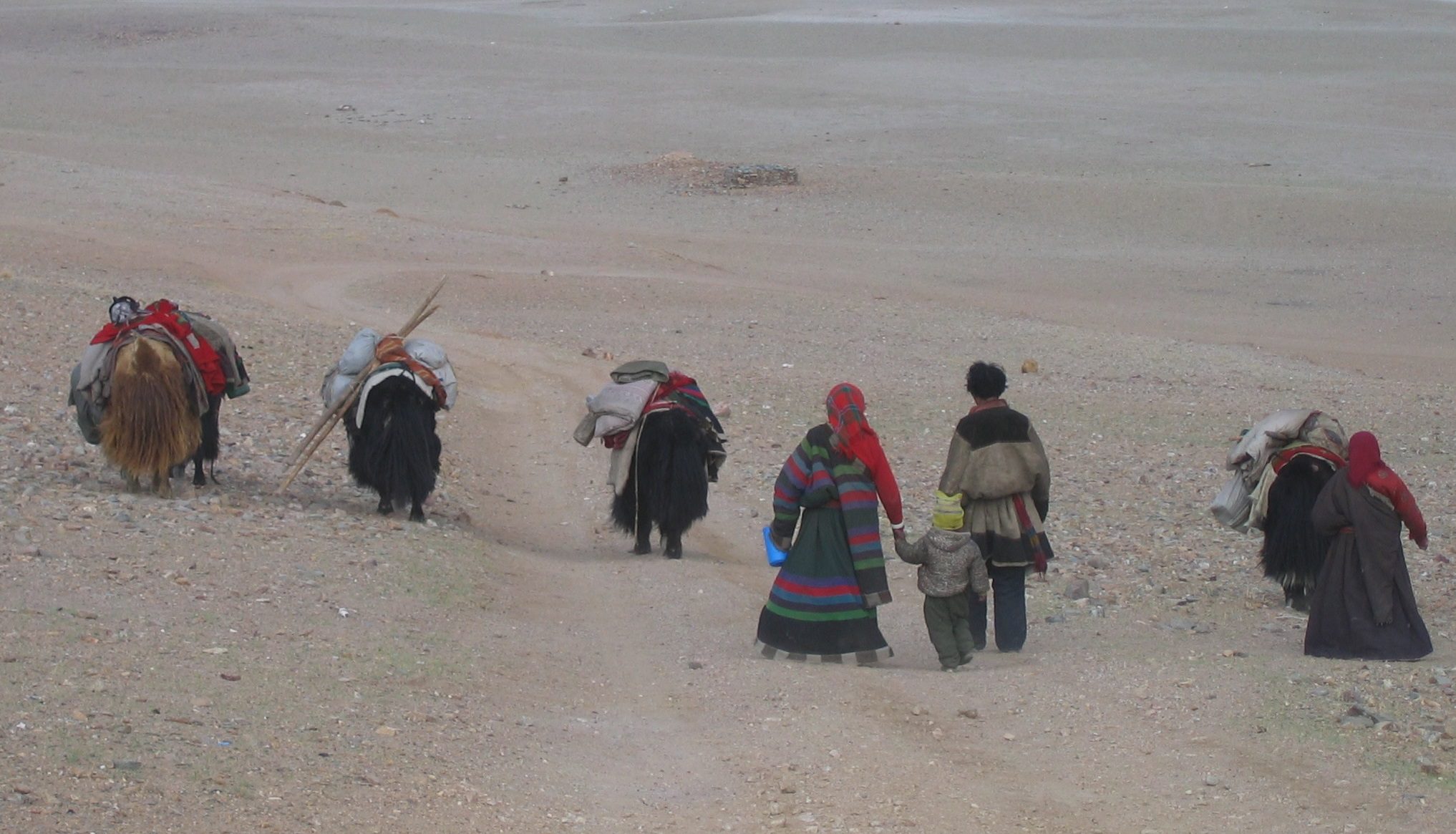
Sacred Lands, Shifting Seasons: The Journey of Migration
If you ask the Changpa herders where they live, they won’t name a single village. Their home is not built from stone or fixed on any map. Instead, it stretches across the Changthang Plateau, flowing with the seasons, marked by invisible trails that only experience can see. For the Changpa, migration is not movement — it is memory, ritual, and rhythm.
I witnessed it on a clear morning, when the wind was still and the sky a sharp, Himalayan blue. The family I was staying with had packed their rebo tent, loaded their belongings onto mules, and wrapped bundles of grain and salt in yak wool blankets. The goats were restless, sensing change, as if the mountains themselves had whispered it was time to go.
There was no frenzy, only flow. As the herd moved forward, so did the family, in practiced silence, with children guiding stragglers and elders watching the clouds. Their route was not marked by road signs or GPS. It was traced by the echo of ancestral footsteps, the smell of old grazing lands, the curve of a familiar ridge. These seasonal migration routes, followed for generations, thread through some of the most remote and awe-inspiring terrain on Earth.
Every pasture has a purpose: one for spring birthing, another for summer fattening, a third for autumn shearing. These are not mere logistical choices, but acts of ecological stewardship. The Changpa know how to rest the land, how to read snowfall, how to predict grass cycles based on the mood of the wind. It is a kind of literacy lost in the cities — the ability to speak the language of landscapes.
Their life is governed by nature’s cues: the return of a certain bird, the thaw of a river, the angle of the sun on a distant peak. With every shift, they adapt — not as victims, but as partners in a centuries-old conversation between people and place.
Of course, modern pressures are encroaching. Restricted grazing zones, border tensions, and unpredictable weather patterns make these journeys more complex each year. Roads have brought both access and intrusion. Some younger Changpa question whether the hardships are worth continuing. Yet, many still choose to walk the old ways, to honor the pact between their herds and the highlands.
As I walked beside them that day — the silence broken only by hooves on stone and the occasional goat’s call — I understood what pilgrimage truly means. This wasn’t just about survival. It was about belief. A belief in land, in life, in motion itself.
To migrate with the Changpa is to witness a kind of slow freedom, untouched by the anxiety of modern life. There are no emails to answer, no train schedules to keep. There is only today’s sky, the scent of new grass, and the quiet strength of people who still know how to move with the Earth, not against it.
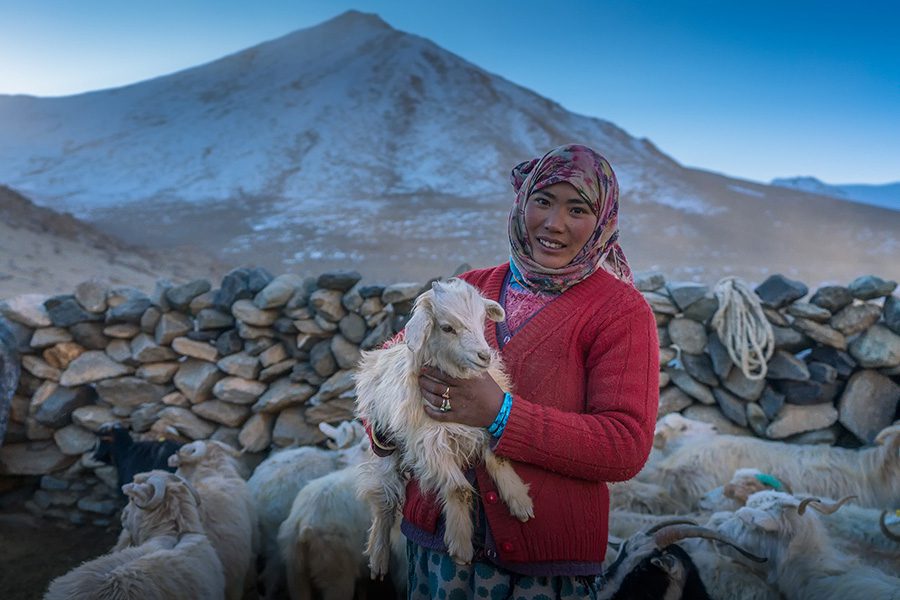
Storms on the Horizon: Climate Change and Modernization
One evening, as we sat around the fire inside a smoke-blackened rebo tent, an elder named Sonam spoke softly while watching the flames. “The winters are not the same,” he said, voice barely rising above the crackle of dung-fueled embers. “The snow comes late, the rivers dry early. The wind has changed.”
These were not poetic musings. They were observations sharpened by decades of experience — the kind of climate awareness that doesn’t rely on satellites or scientific charts. The Changpa herders have always lived in close dialogue with the land. But today, that land is changing in ways they cannot predict.
The once-reliable rhythms of seasonal migration are now riddled with uncertainty. Grasslands that used to support entire herds through summer are drying too soon. Streams fed by glacial melt are running thinner. Violent snowstorms, once rare, now strike with little warning. And in these moments, the fragile balance between survival and collapse teeters.
Modernization, too, has arrived at the edges of the Changthang Plateau. Solar panels glint on the roofs of rebo tents, a satellite phone hangs near the family altar, and younger Changpa scroll through music apps when the wind is calm. There’s a surreal beauty in this juxtaposition: the clash of ancient wool and global bandwidth, of ancestral knowledge and digital possibility.
But it is also a tightrope. Education pulls children toward Leh and Jammu. Economic hardship pushes families to settle near the road, giving up nomadic life for permanent structures and government schemes. Pashmina prices, once the lifeline of the Changpa economy, now fluctuate with global fashion trends and unfair trade chains. And with each passing year, fewer families return to the migration paths that once shaped their identity.
Yet, not all is lost. Some communities are adapting without surrendering. They install solar cookers but continue to herd. They send their children to school, then welcome them home to tend goats during festivals. They learn how to negotiate with wool traders and advocate for indigenous herder rights. Change is inevitable, but the Changpa are not passive observers. They are active negotiators in the complex terrain between past and future.
For travelers like myself — from Amsterdam, Vienna, or Lyon — it is tempting to romanticize the Changpa lifestyle. To see it as something preserved in amber, immune to time. But that does them a disservice. The Changpa are not relics. They are people, evolving under pressure, choosing which pieces of the modern world to accept and which to discard.
As the fire dimmed and stars emerged above the plateau, I realized something simple and profound. Resilience does not mean staying the same. It means staying rooted while still reaching toward the light — just like the wild grasses of Ladakh that bend in the wind, but do not break.
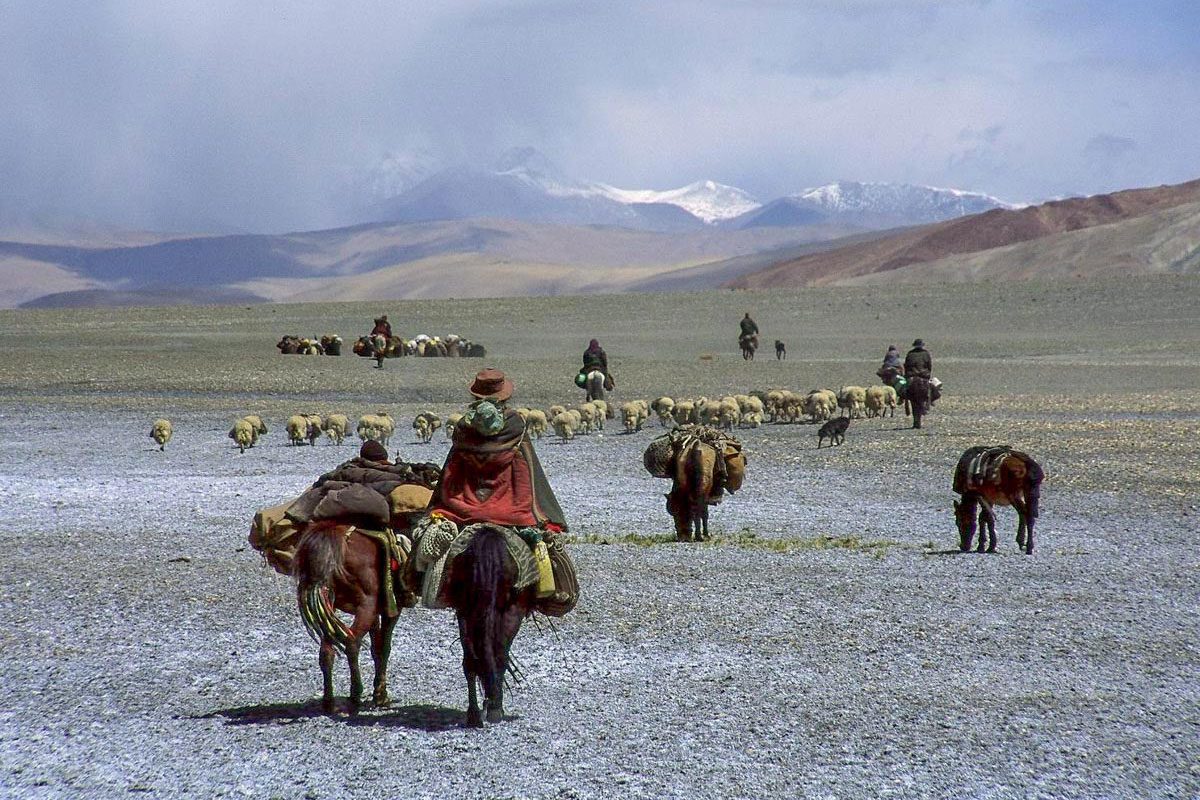
Meeting the Soul of Ladakh: What the Changpa Taught Me
I had come to the Changthang Plateau chasing a story — a tale of nomads and their windswept world, of goats and wool, of tents and mountains. But what I found was far more elusive. I found silence that speaks, gestures that comfort, and a kind of wisdom that doesn’t wear robes or titles, but sits beside a fire, brewing tea, watching the sky.
One evening, I walked alone toward the edge of a grazing field. The sun was sinking behind the ridges, casting long violet shadows across the valley. A young herder girl, perhaps nine or ten, waved to me from atop a boulder. She whistled, and her goats turned with practiced elegance, flowing like water over rock. It struck me then — this child, no taller than my waist, held a kind of command not born from ego, but from attunement.
In the following days, I began to see this everywhere: in the careful way elders folded their bedding before sunrise, in the soft laughter between siblings while collecting dung, in the patient hands that spun wool into thread without ever glancing at a clock. These weren’t just habits. They were expressions of a philosophy. A way of life that placed presence above productivity, connection above consumption.
I asked one of the women, Dolma, what she would wish for if she could have anything. She looked at me and said, quite simply, “For the snow to come when it should, and for the goats to be healthy.” No talk of wealth, no dreams of leaving. Just a hope that the balance between land and life would hold.
Europeans, myself included, often seek meaning in the spectacular — art, monuments, rare wines, distant peaks. But here in Ladakh, among the Changpa herders, I discovered the sublime in the ordinary. A bowl of thukpa shared by firelight. A song hummed in a tent as wool is spun. A glance of trust between a herder and her goat. These small moments gathered weight, until I realized: I wasn’t observing a simpler life. I was being quietly invited into a deeper one.
What the Changpa taught me cannot be bought or scheduled into an itinerary. It must be experienced — slowly, humbly, without the filters of expectation. They taught me to listen before speaking, to walk before rushing, to give before asking. They reminded me that wealth is not always visible, and that the soul of a place lives in its people — not its infrastructure.
As my departure neared, Dolma handed me a strip of hand-spun wool. “For warmth,” she said, wrapping it around my wrist. I thanked her clumsily, unsure how to express the magnitude of what I had received. I still wear it now, each time I travel. It reminds me not of where I’ve been, but of how I want to move through the world.
And so I left the Changthang Plateau not with souvenirs, but with something far rarer: a sense of stillness I could carry. In a world shouting for our attention, the Changpa whispered — and I was finally quiet enough to hear.
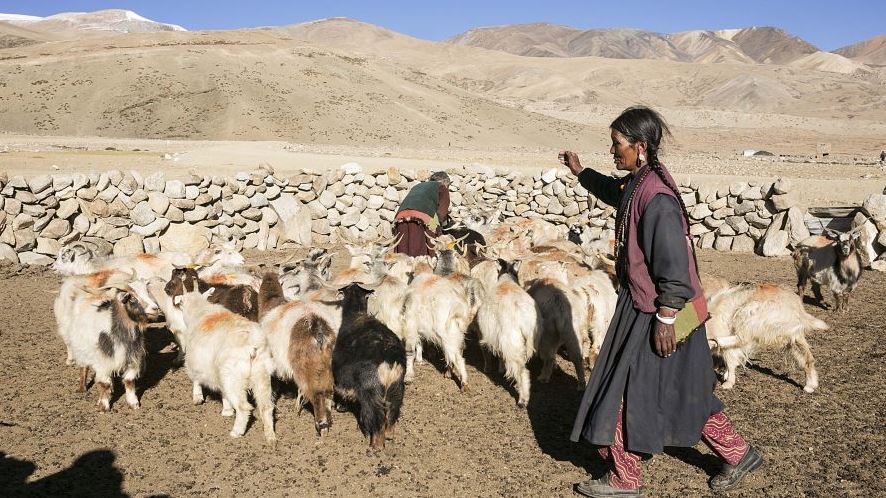
Travel Tips for the Culturally Curious
If your heart feels stirred by the Changpa story — by the echo of hooves on sacred earth, by the warmth of a tent built from wool and memory — then perhaps you’re ready to walk a little of their path. But this is not a destination in the traditional sense. There are no tickets to book, no guided audio tours, no neon signs saying “authentic experience here.” To visit the Changthang Plateau and meet the Changpa herders is to enter a living world, not a curated one.
First and foremost, come with humility. This is not a culture frozen in time, but one in motion — adapting, surviving, enduring. The herders are not performers. They are people. And your presence, however well-meaning, carries weight. So before you go, take a moment to ask yourself: What am I bringing, and what am I taking?
The best time to travel to Changthang is between **late May and early September**, when the passes are open and the herders are in their summer pastures. To reach them, you’ll need to pass through **Leh**, the capital of Ladakh. From there, responsible eco-tour operators or community guides can help arrange visits that respect the rhythm of nomadic life. Independent trekking is possible, but only recommended for experienced travelers with high-altitude preparedness and cultural sensitivity.
Stay in homestays or camps that directly benefit Changpa families. Ask questions, listen more than you speak, and always ask permission before photographing people, homes, or animals. Bring only what you need — the high-altitude ecosystem is fragile and slow to heal. Avoid plastic waste, over-packaged food, and heavy electronics. Simplicity is not just appreciated here — it’s necessary.
If you’d like to offer something in return, consider buying hand-spun wool products directly from the herders. It supports their economy far more meaningfully than souvenirs from Leh’s markets. And remember: stories are the most precious things you’ll take home — and they weigh nothing.
For those coming from Europe, flights typically connect through **Delhi**, with regular onward flights to Leh. Be sure to acclimatize for at least two days in Leh before venturing into the highlands. Altitude sickness is real and should be taken seriously. Travel insurance that covers remote regions and medical evacuation is highly recommended.
Lastly, and perhaps most importantly, leave space for silence. The magic of Changthang is not in checklists or Instagram stories. It’s in the quiet moments: a goat brushing against your leg, a herder’s laugh under starlight, the distant sound of yak bells echoing across empty space.
If you can move slowly, listen deeply, and walk gently, the Changpa may share their world with you — not as a guest, but as a respectful traveler. And in that sacred exchange, something rare happens: tourism becomes not transaction, but transformation.
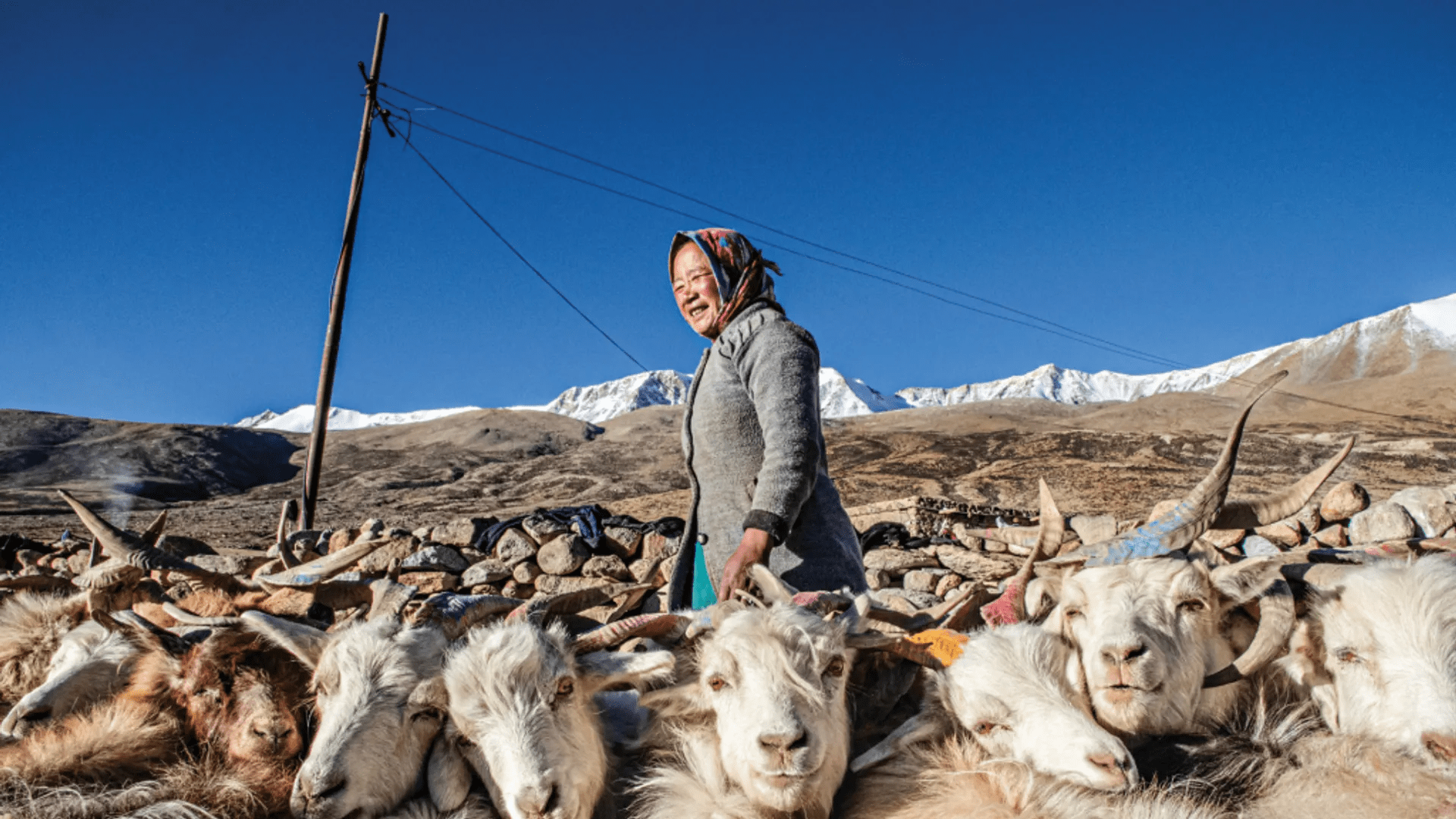
Epilogue: Listening to the Silence of the Changthang
Long after the dust of the plateau settled on my boots, and the last cup of butter tea had been shared beneath a yak-wool roof, the silence of the Changthang Plateau remained with me. Not as absence, but as presence — as something whole and alive. It echoed not in my ears, but in my chest. A reminder that there are places on this Earth where the most powerful thing you can do is to be still, and listen.
What I found among the Changpa herders was not merely a fading tradition or a romantic fragment of the past. It was a philosophy — rooted in respect, endurance, and connection. Their lives are not easy. They are exposed to extremes most of us cannot imagine. And yet, their existence holds a kind of clarity we often lose amid the noise of cities, schedules, and screen-lit lives.
As I returned to the world of departure lounges and deadlines, I carried with me more than just a story. I carried a shift. A quieter way of seeing. A deeper patience. A growing discomfort with the disposable. And a hunger for meaning that lies not in accumulation, but in attention.
For European travelers, used to navigating cathedrals, castles, and cobbled streets, Ladakh offers a different kind of heritage. One that is not carved in stone, but lived in breath. It offers not monuments, but moments — shared by a fire, between strangers, under the watchful gaze of ancient mountains.
If you go, go gently. Let the wind guide you. Let the goats teach you. Let the mountains humble you. And when the world begins to press its noise back upon your shoulders, remember that somewhere out there, beneath a sky too wide for words, a Changpa family is stirring a pot of tea, spinning wool, tending to life with quiet devotion.
And in that remembering, perhaps you’ll begin to carry a little of that silence within yourself. A silence that doesn’t ask you to retreat from the world — but to return to it more awake.
Because sometimes the most enduring journey isn’t the one that changes your location — it’s the one that changes your way of seeing.
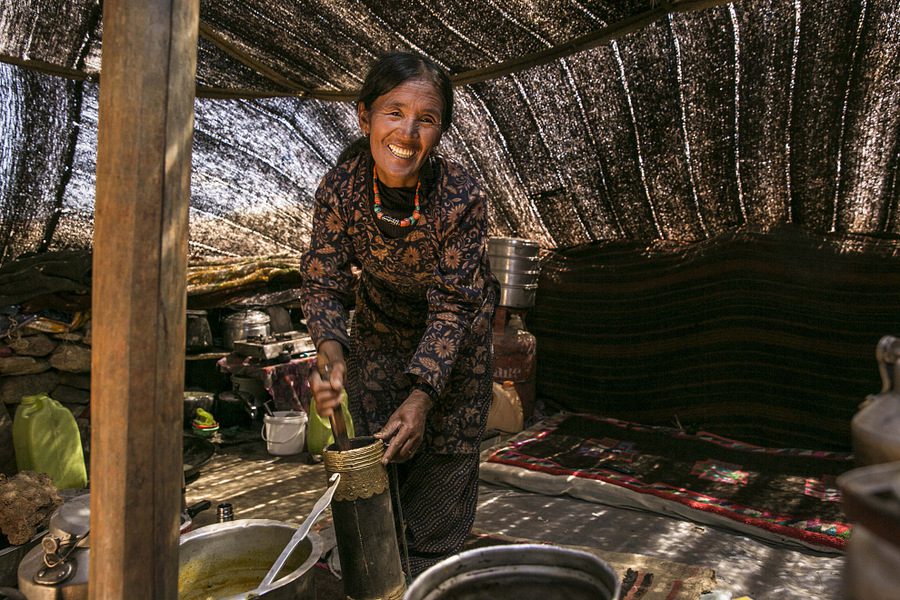
About the Author
Elena Marlowe is a cultural travel writer with a passion for remote landscapes, vanishing traditions, and the quiet wisdom of indigenous communities. Her work has taken her from the steppes of Mongolia to the fjords of Norway, always seeking the untold story behind the horizon. With a background in anthropology and a heart attuned to silence, she writes to bridge the distance between cultures — one conversation, one cup of tea, one shared moment at a time.

